I'm developing a webflux app containing some public and protected resources.
My dependencies:
<dependencyManagement>
<dependencies>
<dependency>
<groupId>org.springframework.boot</groupId>
<artifactId>spring-boot-dependencies</artifactId>
<version>3.0.0</version>
<type>pom</type>
<scope>import</scope>
<exclusions>
<exclusion>
<groupId>org.springframework.boot</groupId>
<artifactId>spring-boot-stater-web</artifactId>
</exclusion>
</exclusions>
</dependency>
</dependencies>
</dependencyManagement>
<dependencies>
<dependency>
<groupId>org.springframework.boot</groupId>
<artifactId>spring-boot-starter-data-mongodb-reactive</artifactId>
</dependency>
<dependency>
<groupId>org.springframework.boot</groupId>
<artifactId>spring-boot-starter-security</artifactId>
</dependency>
<dependency>
<groupId>org.springframework.boot</groupId>
<artifactId>spring-boot-starter-webflux</artifactId>
</dependency>
<dependency>
<groupId>org.springdoc</groupId>
<artifactId>springdoc-openapi-starter-webflux-ui</artifactId>
<version>2.0.0</version>
</dependency>
<dependency>
<groupId>io.jsonwebtoken</groupId>
<artifactId>jjwt-api</artifactId>
<version>0.11.5</version>
</dependency>
<dependency>
<groupId>io.jsonwebtoken</groupId>
<artifactId>jjwt-impl</artifactId>
<version>0.11.5</version>
<scope>runtime</scope>
</dependency>
<dependency>
<groupId>io.jsonwebtoken</groupId>
<artifactId>jjwt-jackson</artifactId>
<version>0.11.5</version>
<scope>runtime</scope>
</dependency>
<dependency>
<groupId>org.projectlombok</groupId>
<artifactId>lombok</artifactId>
<optional>true</optional>
</dependency>
<dependency>
<groupId>org.liquibase.ext</groupId>
<artifactId>liquibase-mongodb</artifactId>
<version>4.20.0</version>
</dependency>
<dependency>
<groupId>org.liquibase</groupId>
<artifactId>liquibase-core</artifactId>
<version>4.20.0</version>
</dependency>
</dependencies>
application.yml:
spring:
main:
web-application-type: reactive
data:
mongodb:
port: 27017
database: vilya_be
liquibase:
change-log: classpath:/mongo/changelog-master.xml
springdoc:
api-docs:
path: /v3/swagger-ui.html
swagger-ui:
path: /v3/api-docs
Java code:
@Configuration
@EnableWebFluxSecurity
@EnableMethodSecurity(securedEnabled = true, jsr250Enabled = true)
@RequiredArgsConstructor
public class JWTSecurityConfig {
private final BearerAuthenticationFilter bearerAuthenticationFilter;
@Bean
public SecurityWebFilterChain filterChain(ServerHttpSecurity http) {
return http.cors()
.and()
.csrf()
.disable()
.httpBasic()
.disable()
.exceptionHandling()
.authenticationEntryPoint(entryPoint)
.and()
.authorizeExchange()
.pathMatchers(USER_V1 + REGISTRATION, USER_V1 + SIGN_IN, "/v3/**")
.permitAll()
.anyExchange()
.authenticated()
.and()
.securityContextRepository(NoOpServerSecurityContextRepository.getInstance())
.addFilterAt(
bearerAuthenticationFilter,
SecurityWebFiltersOrder.AUTHENTICATION)
.build();
}
}
@RestController
@RequestMapping(USER_V1)
@RequiredArgsConstructor
public class UserResource {
private final UserService userService;
private final AuthenticationService authenticationService;
@PostMapping(REGISTRATION)
public Mono<RegistrationResponse> register(
@Valid @RequestBody Mono<RegistrationRequest> request) {
return userService.register(request);
}
@PostMapping(SIGN_IN)
public Mono<TokenPayload> signIn(@RequestBody Mono<SignInRequest> request) {
return authenticationService.authenticate(request);
}
@GetMapping
public Flux<User> findAll() {
return userService.findAll();
}
}
The first two apis are public and I have no issue with them, but the last api is protected, so I expect the swagger ui will have an Authorize or Header section to let me put the bearer token.
Current behavior:

As I mentioned, I'm using springdoc-openapi-starter-webflux-ui and I think it will have auto-configuration so I guess that I don't need to create a @Bean of type OpenAPI manually. But I don't know how to config it to respect my security config. Please help, I'm also new to swagger.
PS: There is no smart lock icon, it just a copy icon. Btw, no Authorization button.



